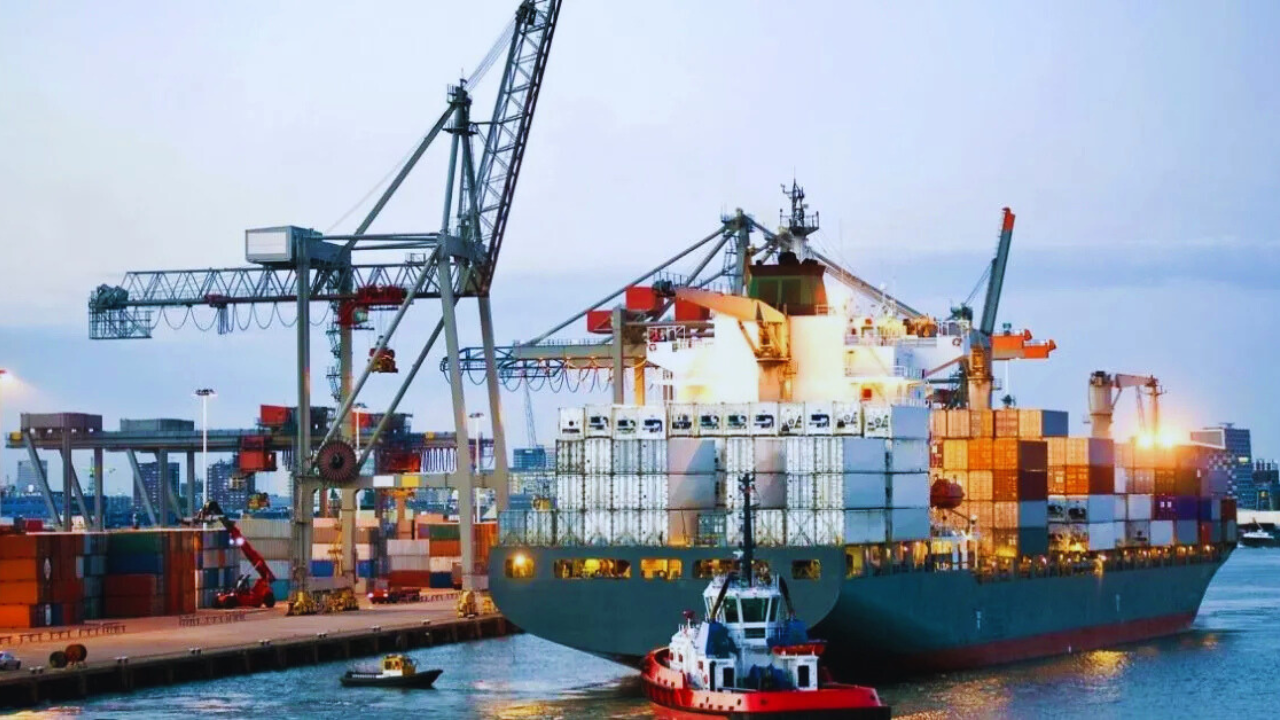On January 28, 2025, railway staff initiated an indefinite strike demanding higher pensions and additional benefits. This action led to the cancellation of train services nationwide, affecting both passenger travel and freight operations. Major stations, including Dhaka’s Kamlapur Railway Station, saw thousands of stranded passengers. The state-run railway system, which serves approximately 65 million passengers annually, was severely impacted.Concurrently, prime mover drivers at Chattogram Port have been striking since October 21, 2024, demanding appointment letters, photo ID cards, and government-declared wages. This strike has disrupted the transportation of imported and exported goods, leading to a backlog at the port. Despite ongoing discussions, the strike continues, causing significant delays in cargo movement.
These strikes have had a profound impact on Bangladesh’s transportation infrastructure, affecting daily commuters and the nation’s supply chain. The government is engaged in negotiations to address the workers’ demands and restore normal operations.Transport strikes have become a recurring issue worldwide, affecting millions of commuters, businesses, and economic activities. These strikes are often a result of disputes between transport unions, government policies, and wage-related issues. I will provide the latest transport strike news updates and their impact on daily life, businesses, and economic stability.
Current Transport Strike Situations
Transport strikes have been occurring across various regions, leading to significant disruptions in daily life and economic activities. These strikes are often caused by issues like wage disputes, poor working conditions, safety concerns, and policy disagreements between workers and employers. In some cases, government decisions or budget cuts trigger these strikes, while other times, workers demand better compensation and benefits. Strikes can affect multiple sectors, from public transportation to freight and logistics, leading to delays, supply chain interruptions, and increased costs. Below is a table highlighting recent strikes, their causes, and the impact on different regions.
Latest Transport Strikes & Causes
Bangladesh Railway Strike: Staff demand higher pensions and benefits, halting train services nationwide.Chattogram Port Strike: Prime mover drivers demand appointment letters and fair wages, disrupting cargo transport.UK Train Strikes: Ongoing disputes over pay and working conditions cause nationwide disruptions.France Transport Strikes: Protests against pension reforms impact trains and buses.US Trucking Protests: Drivers strike over fuel prices and working conditions, affecting supply chains.
| Location | Date | Mode of Transport Affected | Cause of Strike |
| New York, USA | January 2025 | Subway, Buses | Wage disputes, working conditions |
| London, UK | February 2025 | Railways | Pension cuts, salary increments |
| Paris, France | March 2025 | Metro, Buses | Government reforms |
| Mumbai, India | March 2025 | Local Trains, Buses | Pay scale revision |
| Berlin, Germany | April 2025 | Public Transport | Employee rights protest |
Major Reasons Behind Transport Strikes
Transport strikes are often triggered by several factors, including labor disputes, wage disagreements, and poor working conditions. Economic downturns, budget cuts, and government policies can also play a significant role in prompting these strikes. Political decisions, such as changes in transport regulations or privatization efforts, may also lead to worker unrest. Public transportation systems, supply chains, and daily commuting are heavily impacted, causing delays, increased costs, and widespread disruptions. Strikes not only affect workers but also create ripple effects across industries and communities. The need for fair negotiations and improved working conditions is critical to minimizing such disruptions.
Wage Disputes
One of the most common reasons for transport strikes is the demand for better wages and financial benefits. Transport workers, including bus drivers, railway staff, truck drivers, and airline employees, often protest against stagnant wages that do not keep up with inflation and the rising cost of living. In many cases, unions negotiate with employers or governments for fair wages, but when talks fail, strikes become inevitable.
Poor Working Conditions
Many transport workers face harsh working conditions, such as excessive working hours, lack of rest breaks, inadequate sanitation facilities, and exposure to extreme weather conditions. Long-haul truck drivers, for example, often work for extended periods with minimal rest, leading to exhaustion and health issues. Similarly, railway workers and airline crews may protest against poor schedules and lack of proper accommodations, demanding improved working conditions.
Government Policies & Reforms
Government decisions can directly impact transport workers, leading to widespread strikes. Policies such as fare hikes, privatization of public transport, reduction in subsidies, or changes in pension schemes often trigger protests. In some cases, governments introduce automation in the transport sector, which threatens traditional jobs, causing workers to strike in opposition. For example, planned railway privatizations in various countries have led to significant strikes by unions fearing job losses and reduced benefits.
Job Cuts & Downsizing
As companies and governments try to reduce operational costs, downsizing in the transport sector can lead to significant job losses. Layoffs in railway services, airline staff reductions, or job cuts in public bus services can result in mass protests. Transport unions often oppose these cost-cutting measures, arguing that they not only threaten livelihoods but also affect service quality and passenger safety.
Safety Concerns
Transport workers often go on strike due to safety concerns, demanding better protection and improved working conditions. Bus and taxi drivers in high-crime areas, for instance, may demand better security measures. Railway workers may protest against outdated infrastructure that increases the risk of accidents. Similarly, truck drivers often strike over hazardous road conditions or the lack of proper rest areas. The COVID-19 pandemic highlighted the importance of health and safety measures, leading to strikes by transport workers demanding protective equipment and better sanitation at workplaces.
Impact of Transport Strikes on Daily Life
The effects of transport strikes are far-reaching, creating disruptions in daily life, business operations, and the economy. For individuals, strikes lead to delays, higher travel costs, and limited access to essential services. Businesses experience reduced productivity, supply chain issues, and loss of revenue due to a lack of mobility. Economies suffer from slower growth, as transport strikes hinder the movement of goods and services, impacting industries like retail, manufacturing, and tourism. Governments may face challenges with tax collection and public safety. The ripple effect of a transport strike can extend to various sectors, causing short-term and long-term consequences for all involved.
Effects of Transport Strikes on Different Sectors
Transport strikes have significant effects on various sectors. Commuters face delays and increased travel costs, impacting daily routines. Businesses experience reduced productivity, supply chain disruptions, and revenue losses due to transport unavailability. The retail and tourism industries suffer as customer footfall decreases. Public services, including healthcare and emergency responses, are delayed. The economy overall experiences slowdowns as industries struggle with mobility constraints.
| Sector | Impact |
| Commuters | Increased travel time, higher travel expenses |
| Businesses | Delays in goods delivery, productivity loss |
| Economy | Reduced revenue, increased inflation |
| Tourism | Fewer visitors, revenue drop |
| Education | School and university attendance affected |
Response from Authorities and Public
Transport strikes create widespread disruptions, prompting responses from governments, businesses, and the public. To mitigate negative effects, authorities deploy measures like extra buses, carpooling options, and temporary transport services. Governments may also intervene with legal frameworks, mediation, and emergency policies to maintain essential services. Businesses adapt by encouraging remote work or adjusting schedules to minimize impact. Meanwhile, commuters find alternatives like ride-sharing, cycling, or working from home to cope with the disruptions. Public awareness campaigns help inform citizens of available options. Through these combined efforts, stakeholders aim to restore normalcy and reduce the severity of the strike’s effects.
Alternative Transport Arrangements
Additional Public Transport Services: Extra buses, trams, or temporary shuttle services are deployed.
Rental Bikes & E-Scooters: To promote individual mobility, authorities encourage rental bike and scooter services.
Carpooling & Ride-Sharing: Companies and governments collaborate to promote carpooling and rideshare platforms.
Subsidized Travel Options: In some cases, authorities reduce fares on available transport alternatives.
Policy Revisions & Negotiations
Negotiations with Unions: Government and company officials work toward settlements to address worker grievances.
Temporary Agreements: Authorities may implement short-term compromises to restore services while long-term policies are discussed.
Regulatory Reforms: Governments may introduce new labor laws, wage adjustments, or safety regulations to prevent future strikes.
Legal Measures: In extreme cases, legal interventions such as court orders or mandatory return-to-work policies may be enforced.
Public Adaptation
Remote Work & Flexible Hours: Many employees work from home or adjust schedules to avoid peak congestion.
Increased Cycling & Walking: Those living near workplaces opt for cycling or walking to commute.
Greater Use of Technology: Virtual meetings and online learning platforms reduce the need for physical travel.
Community-Led Initiatives: Neighborhoods organize carpools or local transport solutions to assist one another.
Emergency Measures
Government-Managed Transport Services: Authorities may deploy government vehicles to transport essential workers.
Priority Access for Critical Workers: Special transport passes or reserved seats for medical staff, police, and emergency responders.
Military or Private Transport Support: In extreme cases, military vehicles or private sector transport services may be temporarily utilized.
Public Awareness Campaigns: Authorities provide real-time updates and safety advisories to help commuters plan their travel.
Possible Solutions to Prevent Future Strikes
While strikes are often an inevitable response to unresolved grievances, there are several proactive measures that can be taken to reduce their frequency and mitigate their impact. These solutions aim to foster better relations between employers and employees, create fair working conditions, and provide mechanisms for early conflict resolution. Below is a comprehensive discussion of possible solutions to prevent future transport strikes.
Better Communication Between Employers and Employees
One of the key factors contributing to strikes is the breakdown of communication between workers and employers. By establishing open and transparent lines of communication, many issues can be resolved before they escalate into full-scale strikes.
Regular Meetings: Frequent meetings between transport unions and employers can allow both parties to discuss concerns and negotiate solutions in real time.
Grievance Redressal Systems: A structured and effective grievance handling system can help workers voice concerns before they reach a boiling point.
Employee Representation: Allowing employees to have a say in decision-making processes through unions or worker councils can help in addressing their concerns and preventing misunderstandings.
Digital Communication Platforms: Utilizing online platforms for regular updates, surveys, and feedback can foster a more transparent and responsive work environment.
Fair Wage Policies
Wage disputes are often a major reason behind transport strikes. Ensuring that workers are compensated fairly for their work can greatly reduce the likelihood of strikes while also improving their overall job satisfaction.
Competitive Salaries: Transport companies should ensure that salaries are competitive within the industry to prevent workers from feeling undervalued.
Bonuses and Incentives: Offering performance-based bonuses and incentives can motivate workers while aligning their interests with company objectives.
Wage Transparency: Transparency regarding wage structures and pay increases can prevent confusion and resentment among workers.
Comprehensive Benefits: In addition to wages, offering benefits such as health insurance, retirement plans, and paid leave can enhance job satisfaction and reduce the likelihood of industrial action.
Improved Working Conditions
Working conditions have a direct impact on worker morale and productivity. Poor conditions often lead to strikes as workers seek better safety, health, and well-being.
Health and Safety Standards: Transport employers must prioritize worker health and safety by ensuring that work environments are free from hazards. Regular safety audits and training should be mandatory.
Reasonable Work Hours: Ensuring that employees work within reasonable hours and have ample time for rest can reduce fatigue and stress, which are common strike triggers.
Job Security: Transport companies should provide job security by ensuring long-term employment and fair contracts for their workers. The uncertainty around temporary contracts often leads to dissatisfaction and unrest.
Access to Amenities: Improving amenities like clean rest areas, proper bathroom facilities, and meal options for transport workers can enhance their comfort and overall job satisfaction.
Training and Career Development: Providing workers with opportunities for skill enhancement and career progression can reduce the likelihood of dissatisfaction that could lead to strikes.
Government Intervention
In some cases, government intervention can be an effective way to prevent or address transport strikes. Proactive involvement from authorities can help resolve conflicts before they result in widespread disruption.
Mediation Services: Governments can provide neutral mediation services to help facilitate negotiations between workers and employers, ensuring that both parties have a fair opportunity to present their concerns and come to a resolution.
Legal Frameworks: Governments can introduce or enforce labor laws that guarantee fair treatment, such as minimum wage laws, regulations on working hours, and laws protecting workers’ rights to unionize.
Public Pressure and Support: Governments can apply public pressure on both transport companies and unions to reach a compromise and avoid strikes, especially when public services are severely impacted.
Long-Term Labor Policy Reforms: Governments should create long-term labor policies that ensure fair wages, safe working conditions, and benefits for transport workers. These reforms can prevent the accumulation of grievances that often lead to strikes.
Subsidies or Financial Assistance: In extreme cases, the government may offer subsidies or financial assistance to transport companies during challenging times, such as economic downturns, to avoid layoffs or cutbacks that might provoke industrial action.
Wrapping up
Transport strikes have a far-reaching impact on society, causing economic losses, commuter frustrations, and disruptions to daily life. These strikes can affect productivity, strain public services, and harm businesses, making it essential to address the underlying causes. By understanding the factors that lead to strikes, such as wage disputes, poor working conditions, and communication breakdowns, it becomes possible to develop strategies that prevent them.
Solutions like fair wage policies, improved worker conditions, open communication, and proactive government intervention can help minimize the frequency and impact of strikes. For long-term success, it is crucial for governments, unions, and businesses to collaborate closely, balancing the rights of workers with the needs of the public. In this way, a more sustainable and efficient transport system can be created, benefiting all stakeholders and reducing the likelihood of future disruptions.
FAQs
What are the main causes of transport strikes?
Transport strikes are primarily triggered by wage disputes, poor working conditions, safety concerns, government policies, and job insecurity. Workers often strike to demand better pay, benefits, and a safer work environment. Unresolved grievances related to work hours, overtime pay, and job cuts also contribute significantly to strikes. Additionally, disputes over the terms of contracts or lack of proper labor representation can escalate into strikes.
How do transport strikes impact commuters?
Commuters experience major disruptions during transport strikes, including delays, limited mobility, and longer commute times. The unavailability of public transport forces people to seek expensive alternatives like taxis or car rentals. Public transport strikes also lead to overcrowding and traffic congestion as more people rely on private vehicles. For those who rely on transport for work, education, or daily necessities, these strikes can cause significant inconvenience and stress.
What measures can be taken to reduce the impact of transport strikes?
Measures to reduce the impact of transport strikes include offering alternative transport options such as additional buses, ride-sharing services, or rental bikes. Governments can step in with proactive policies, providing mediation between unions and employers to resolve disputes. Effective communication between employers and employees is essential for addressing grievances before they escalate. Additionally, emergency services and priority measures for essential workers can ensure critical functions are not disrupted.
How do transport strikes affect the economy?
Transport strikes can have a profound effect on the economy by disrupting business operations, lowering productivity, and hindering supply chain movement. Industries that depend on timely deliveries, such as manufacturing and retail, suffer losses due to delayed shipments. Government revenue from taxes and services may decrease as fewer people are able to reach work or engage in business. Additionally, tourism and hospitality sectors can experience declines in customer attendance during strikes, further affecting economic health.
Can transport strikes be completely prevented?
Although it may not be possible to completely prevent transport strikes, there are several strategies to minimize their occurrence. By ensuring fair wages, improving working conditions, and creating open communication channels between workers and employers, many strikes can be avoided. Establishing stronger labor laws and conflict resolution mechanisms can help resolve issues before they escalate into strikes. Proactive government involvement in labor disputes can also lead to timely solutions.
How do governments handle transport strikes?
Governments often take a proactive role in managing transport strikes by offering mediation services to resolve disputes between workers and employers. They may also enforce emergency measures, such as providing additional transport services or prioritizing essential services. In some cases, governments intervene legally, ensuring that transport services are resumed quickly to prevent widespread disruption. Public awareness campaigns are also launched to keep commuters informed of changes and alternatives.
What long-term solutions can help prevent transport strikes in the future?
Long-term solutions to prevent transport strikes include implementing fair wage policies, improving working conditions, and ensuring job security for transport workers. Regular dialogue and negotiations between unions and employers can help address concerns before they lead to strikes. Government intervention through proactive legislation, labor rights protections, and mediation services also plays a crucial role. Additionally, providing training and career development opportunities for workers can enhance job satisfaction and reduce the likelihood of disputes.










